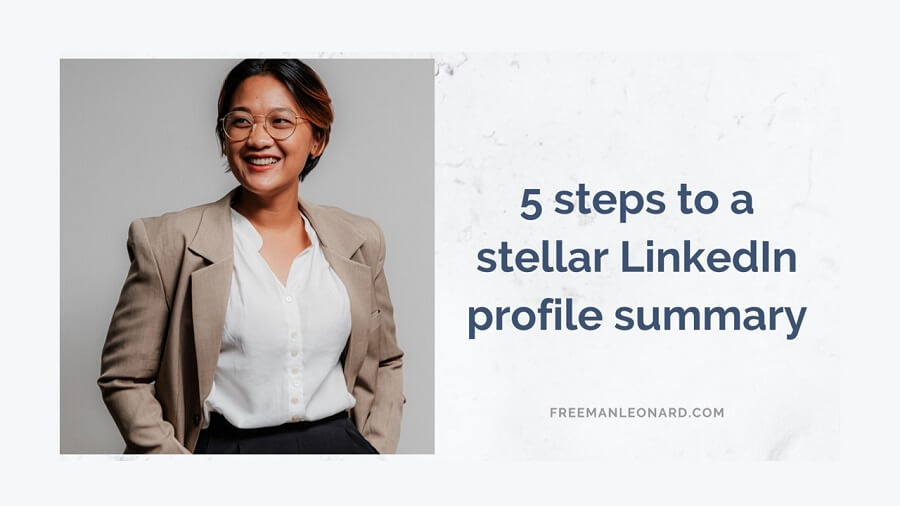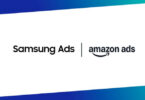As the hot job market continues to burn bright, many strong candidates are still being overlooked and wondering why. Could high-profile layoffs and economic uncertainty be to blame for a hiring slowdown? According to economists and what we’re seeing first-hand every day in the trenches — no way! It’s still a job seeker’s market.
So, what gives?
The game has changed, and it keeps changing. If you’re on the job market for the first time in years, you may have noticed some things have changed, but one hasn’t: You must always be willing to adapt.
One of the biggest game-changers? LinkedIn reigns supreme. For snagging professional opportunities, it’s the place to be, more so than job boards or anywhere else online.
If your LinkedIn profile feels like a time capsule of your former professional life, you’re short-changing yourself. Full stop. It’s time to dust off the cobwebs and polish your profile — especially the “About” section, a.k.a. your profile summary or bio.
But if you’re worried about adding another task to your job hunt to-do list, we have good news:
The cover letter is officially dead.
Our clients rarely ask for cover letters, and if you suspect the countless letters you’ve written during a job search have gone unread — you’re probably right.
“I never read cover letters. Too many resumes to review,” Ashley Allen, Senior Manager, Talent Solutions at Freeman+Leonard confesses. “Recruiters and hiring managers are short on time, so we tend to dive straight into whatever’s going to give us the best picture of the candidate’s potential fit for the role.”
Every recruiter on our team agrees. So let’s put this to rest — unless an employer specifically asks for a cover letter, you can skip it!
What’s taken its place? You guessed it: a killer LinkedIn profile summary.
As cumbersome as the now-defunct cover letter was, it served its purpose — to explain why you want the job, illustrate why your background suits you for the role, fill in any gaps from your resume, and exhibit your writing skills.
LinkedIn is now where you do that — and it’s far more efficient and effective.

After all, you only need to write your profile summary once and you’re done. Sure, you’ll tweak and update it along the way, but you won’t have to start from near-scratch and go through the motions of flattery and formality every time you apply for a job.
The beauty of a LinkedIn profile summary is that it serves as a single “source of truth” about your professional history, which helps employers understand who you are and what you contribute — way better than a resume and cover letter.
In today’s job market, LinkedIn is the one place recruiters go to get the best picture of a candidate and where employers turn to find out more about you. Out with the old and in with the new.
Here’s what you can do to get your profile summary up to speed.
1. Catch their attention with a hook, and keep it with a story.
As a marketer, no matter the role, you’re expected to know what it takes to stand out in today’s competitive job market. Perhaps that seems a little unfair, as everyone knows that it’s much more awkward to market yourself than it is to market a company’s products or services. But the reality is, LinkedIn is prime real estate for demonstrating your personal branding chops and social media savvy, and the bar is higher for those in this industry.
Use an eye-catching hook that stops their scroll and piques their interest.
Put some effort into making your first sentence a statement or question that makes recruiters want to keep reading — something unexpected, intriguing, or provocative.
Tell a story that connects the dots.
The key is to frame your background so that seemingly unrelated roles and deviations from a linear path are viewed as the best possible preparation for where you are now and where you want to go.
Make your profile summary as distinctive and captivating as possible.
- What makes you different?
- What motivated your career pivot?
- What is the overarching theme of your career?
And you don’t have to stick with words. Whenever possible, show, don’t tell. Add rich media such as infographics, videos, or images to provide a clear picture of who you are as a candidate.
2. Work the algorithm.
“You appeared in 3 searches this week.”
If you’ve received an email like this from LinkedIn or you’ve checked out your profile’s analytics only to find an equally dismal number of search appearances, it can make you feel dejected — as if nobody’s looking for someone like you and you’ll never find a new job.
More than likely, that couldn’t be further from the truth. Chances are, recruiters are scouring the platform, eyes peeled for someone with your background and skills.
But if you haven’t optimized your profile, you won’t show up in search.
It’s as simple as that.
What words are recruiters using to search for candidates for your target role? Put those in both your profile summary and your LinkedIn headline.
For example, when we’re looking to fill a Creative Director opening, and the client is looking for a candidate with working knowledge of prototyping tools, we might search for specific software keywords, such as Figma, InVision, and Zeplin.
Remember, this is about getting the role you want, not the one you have. If you have the chops to be a Creative Director but haven’t held the title yet, make that clear — starting with your headline! You can and should dub yourself a Creative Director (or whatever your next-step dream job is) before any employer does. This is no time to play it too safe or let imposter syndrome get the best of you. Use words relevant to your actual experience and the job you’re after — yes, the specific phrases you see used in ads for Creative Directors.
No magic tricks necessary. To optimize it for search, you simply need to include keywords in the text — with one big caveat: Write for humans, not robots.
Your priority should be to ensure that your profile summary is well-written and engaging, not keyword-stuffed.
In other words, no 2008-era SEO black-hat tricks (for example, “An SEO expert walks into a bar, bars, pub, public house, Irish pub, drinks, beer, wine, liquor, Grey Goose, Cristal…”). If using all the right keywords makes your writing clunky, add a list at the end (for example, “Specialties: keyword, keyword, keyword, etc.”).
3. Put your personality on full display.
Remember, people hire people.
“Show some personality,” says Andrea Tipton, EVP, Marketing and Talent Solutions at Freeman+Leonard. “I want to see a sneak peek into your work style and personal approach to what you do. Think of it as your elevator pitch — you’re on the 10th floor and you need to let the recruiter know who you are professionally and personally before you reach the lobby.”
- What lights you up about your work?
- Why did you choose your career?
- What do you value most? What makes you tick?
- What are you best known for at work or among your friends?
Although we’re looking for the right match on qualifications and skills first, we also want to know a bit about what you like to do outside of the office. Sharing a few words about your hobbies and interests can go a long way toward making a connection — your fellow yogis, true-crime podcast junkies, or world travelers will take interest.
The best way to show off your personality is to write like you speak.
Most important, ditch the jargon, academic formality, and buzz words, and write as if you’re talking to a friendly colleague — in first person. What not to do: “Highly motivated, strategic thinker with a proven track record of delivering results.” Yeah, aren’t we all? Tell me something I don’t know!
4. Show them you’re the G.O.A.T.
Crafting a compelling LinkedIn profile forces you to become clear about your career goals, be honest about your background, and present the strongest version of what you bring to the table.
If there’s ever a place to rock your main character energy, it’s in your LinkedIn profile summary.
You don’t get a gold star for being modest, making light of your achievements, or downplaying your goals.
Obviously, you don’t want to lie or stretch the truth if you’re not actually the greatest of all time, but you’ll want to take it further than a mere humble brag. Maybe you were the top performer on your team or you won an industry award or you blew past your KPIs. Don’t be afraid to toot your own horn.
- What obstacles have you overcome?
- What accomplishments are you most proud of?
- What big lessons have you learned, and how?
The idea here is not to come across as arrogant, but to confidently assert your competence and credibility. Use metrics and specific examples if you want to make a strong impression.
5. Add a call to action.
Again, you’re a marketer. You should know all about calls to action. What do you want your summary to accomplish? What do you want the reader to do next? Don’t leave it up to chance; spell it out.
They might not take that next step, but by including a CTA you’ve demonstrated that you’re thinking ahead and you have a purpose in mind .
Encourage readers to view your portfolio or website, and add your URL. Prompt them to book a meeting or coffee chat, and add a link to your calendar scheduling tool.
Even if you’re not actively on the market, state the kinds of opportunities you’re seeking. Are you open to speaking, side projects, writing guest blog posts, media interviews, volunteering, or mentoring? Say so. Are you looking to grow your network in a certain industry? Mention it.
All of this — but keep it short!
This might seem like a lot to include in 2,000 characters or less, but you can cover a lot of ground while keeping it short and sweet. Attention spans are fleeting and space is limited, so be concise, make your points, and skip to the good part.
As with all writing for the web and digital platforms, make sure your profile summary is skimmable and easy to read. Use short paragraphs (1-3 sentences each) with plenty of white space, headings, and bullet points.
Hint: LinkedIn doesn’t allow rich text formatting with actual bullet points, but you can always copy and paste this bullet character: •
Not sure if your LinkedIn profile summary measures up?
Run it past your recruiter. We look at LinkedIn all day and know exactly what it takes to stand out and get noticed. Remember, there’s never any fee for our services. Connect with us on LinkedIn and submit your resume at jobs.freemanleonard.com.
original content














